
Get Rid of Millipedes in Your Charleston Home for Good
Coastal storms, dense shade, and ventilated crawl spaces across Charleston County set the stage for seasonal millipede waves. They cluster on porches and at door sweeps after rain.
Our county-wide program dries edges, tightens entries, and treats harborages with low-odor solutions. Trust All U Need Pest Control for fast, family-friendly control—call 1 (888) 239-BUGS.
Pest Control Services in Charleston County, SC
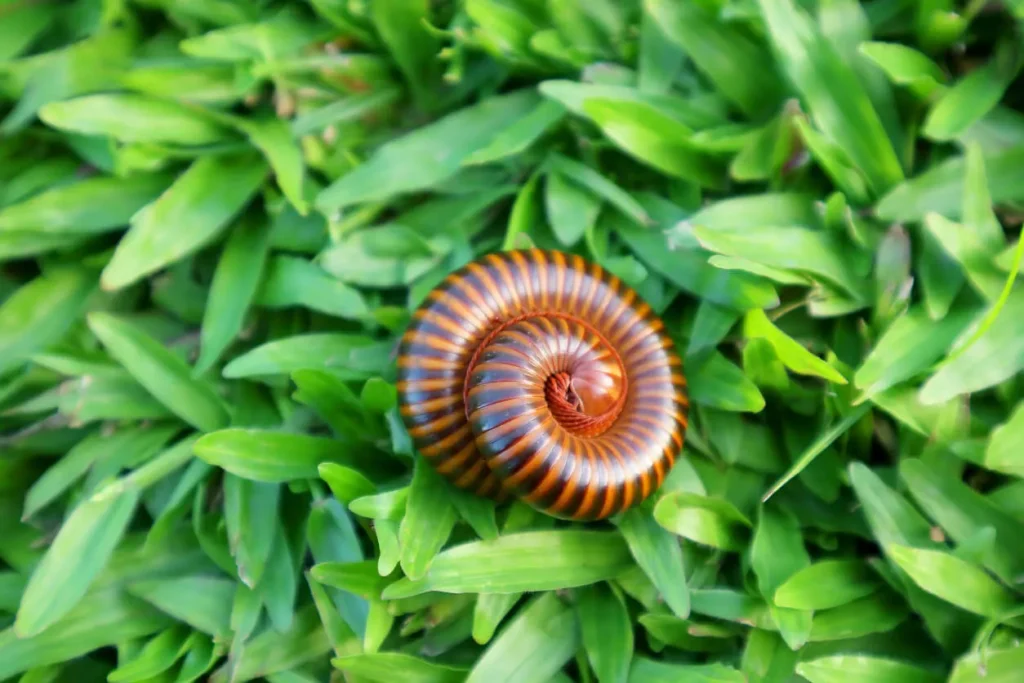
Millipede Control in Charleston, SC
Millipedes in Charleston, South Carolina, can be more than a passing nuisance—they’re a sign that excess moisture and lush, shaded landscaping are inviting coastal pests right up to (and sometimes into) your home. These slow-moving arthropods are detritivores that thrive in damp soils, pine straw, and leaf litter common across the Lowcountry. After heavy summer thunderstorms, king tides, or long humid stretches, millipedes often migrate in large numbers, appearing along thresholds, baseboards, porches, garages, and crawl spaces. While they don’t bite, sting, or damage structures, many species release a defensive fluid that can stain porous surfaces and irritate sensitive skin, making swift, careful control the smart choice.
Charleston’s environment sets the stage. Our humid subtropical climate, frequent afternoon storms, and proximity to marshes and tidal creeks create persistent moisture around foundations and in shaded plant beds. Architectural features like raised homes on brick piers, ventilated crawl spaces, and deep porches create cool, protected microclimates that millipedes love. Lush landscaping—azaleas, camellias, jasmine, ligustrum, live oaks, and palmettos—creates year-round leaf litter. Pine-straw mulch, popular across Mount Pleasant, West Ashley, and James Island, traps moisture and provides perfect harborage. The result: seasonal waves of millipedes that can make interiors feel less clean and comfortable.
All U Need Pest Control delivers millipede control designed specifically for Charleston homes—from historic singles on the Peninsula and townhomes on Daniel Island to ranch styles on Johns Island and newer builds in Goose Creek and Summerville. Our approach blends moisture and habitat corrections with precise, low-impact treatments that keep millipedes out, season after season. The goal isn’t just to clean up today’s sightings; it’s to fix the conditions that cause millipedes to march inside after every storm.
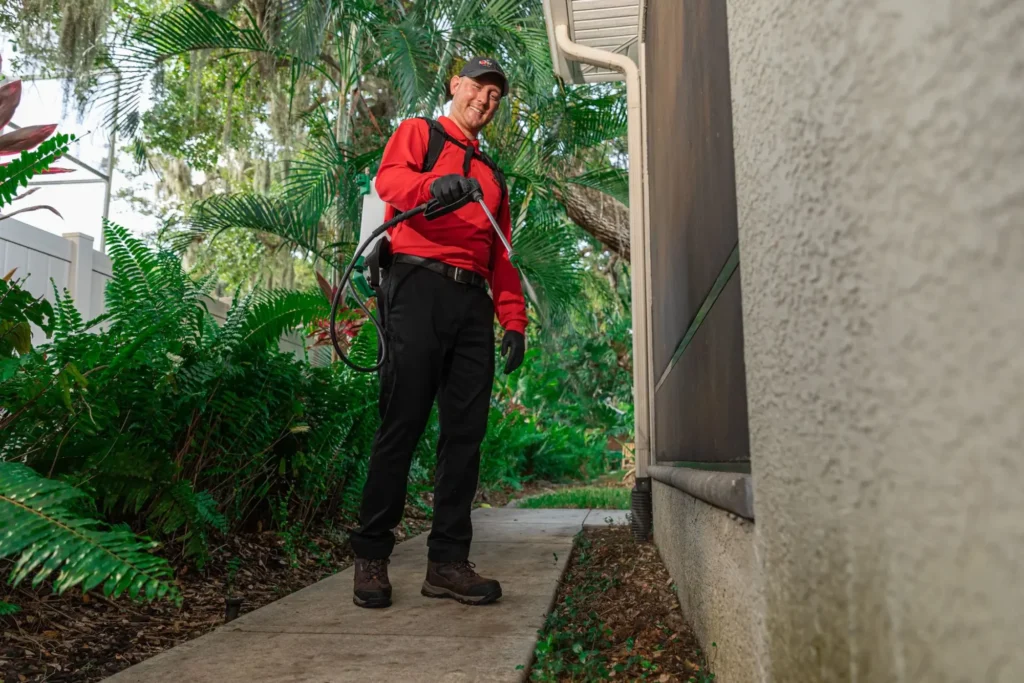
How to Get Rid of Millipedes in Charleston, SC
Effective millipede control in Charleston starts with understanding why they’re appearing. Millipedes feed on decaying organic matter: leaf litter, thatch, old mulch, and moist soil. When rains saturate beds or king tides push groundwater high, soil oxygen drops and conditions shift—millipedes leave their damp refuges and head for the drier terrain of steps, thresholds, and interior baseboards. Crushing them indoors can release fluids that stain; sweeping them out without addressing moisture simply delays their return.
Our roadmap is straightforward and Charleston-specific:
Correct the moisture. Improve drainage at downspouts, extend splash blocks, dry crawl spaces, and redirect irrigation so soil near the foundation doesn’t stay perpetually wet. If you have a raised home, consider crawl-space encapsulation or dehumidification; if your slab is at grade, maintain a vegetation-free band near the foundation and keep irrigation heads off the first foot of soil by the house.
Modify the habitat. Thin or replace heavy pine-straw mulch near walls with a shallower layer or mineral mulch (stone/gravel) to speed drying. Rake and remove leaf litter under live oaks and palmettos after storms. Trim shrubs off siding and porch lattice to restore airflow.
Seal the “easy” entries. Tight door sweeps at porch entries, thresholds that meet the slab cleanly, screened crawl-space vents, and weep-hole covers designed for masonry help block routine intrusions—without reducing the ventilation historic homes need.
Use targeted treatments. Professional exterior-perimeter and entry-point applications create a clean, protective buffer along the exact routes millipedes take. Proper placement matters more than volume; in Charleston’s climate, precise timing around rainfall is just as important.
Maintain. A light, seasonal service keeps the barrier active through peak moisture cycles (late spring through fall) and after large rain events.
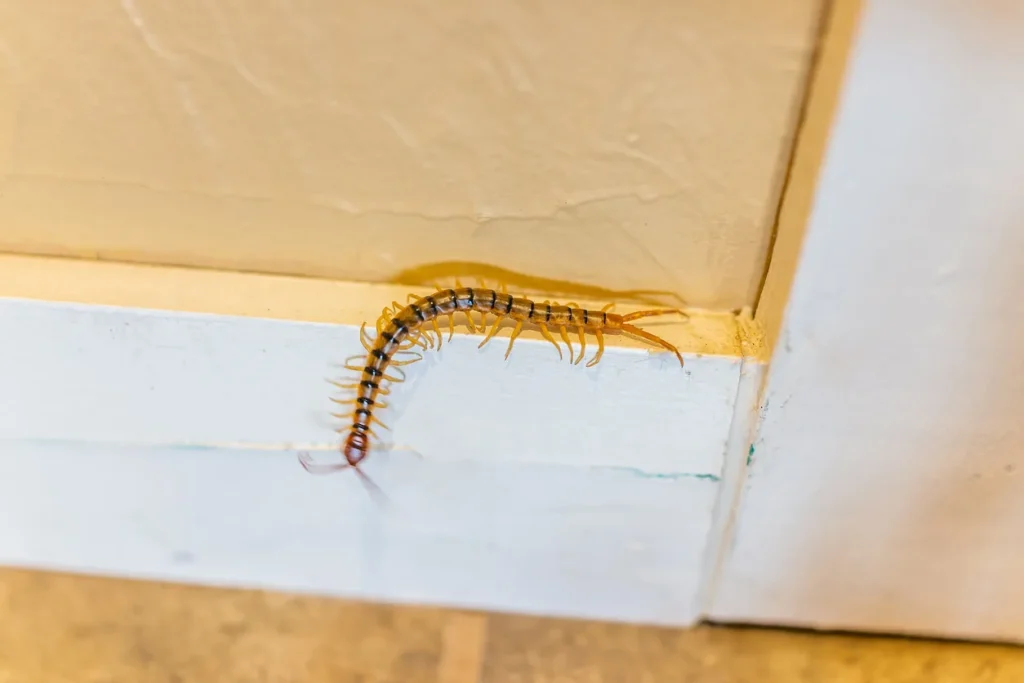
Millipede Treatment in Charleston, SC
We don’t rely on one-size-fits-all spraying. We inspect, diagnose, and design a plan that tackles why millipedes are showing up and where they harbor on your property. After a thorough consultation, we build your program around the factors that commonly drive millipede activity in the Lowcountry:
- The mix of native and ornamental plants in your beds—and how densely they trap shade and moisture.
- The type, depth, and placement of mulch or stone around foundations, porches, and walkways.
- Irrigation schedules, overspray onto walls/steps, and drainage patterns that keep soils chronically damp.
- Proximity to marsh edges, retention ponds, low-lying areas, and shaded courtyards that hold moisture.
We then fine-tune your treatment plan by considering:
- Millipede activity: Where and when you’re seeing them—post-storm surges, nightly migrations, garage/crawl-space accumulations.
- Environmental shifts: King tides, tropical systems, and heat waves that trigger migration indoors (and how your home’s style—raised vs. slab—changes the risk).
Unlike providers who blanket-spray, we use targeted, seasonally appropriate products and Integrated Pest Management (IPM) techniques aligned with millipede biology and Charleston’s microclimates. The result: effective removal now with fewer re-entries later.
Comprehensive Inspection/Consultation
We map the problem from the outside in—grading and drainage, mulch depth, gutter and downspout performance, irrigation overspray, door sweeps, weep holes, vents, thresholds, and crawl-space humidity. In historic properties, we look for damp sill plates, compromised vapor barriers, and shaded plantings that hold moisture close to brick piers. Then we deliver a step-by-step plan that fits your goals and budget.
Treatment
Based on our findings, we apply precise perimeter and entry-point treatments, focusing on cracks, expansion joints, and gaps where millipedes travel. We address moisture-heavy zones along foundations, under decks, in garages, and at crawl-space interfaces. For raised homes and older coastal builds, we adjust techniques to protect sensitive materials while maximizing results. Treatments are timed around rain events to create a durable, well-placed buffer when insects are most likely to migrate.
Ongoing Maintenance
Charleston’s humidity and storm cycles can re-create conducive conditions. Our maintenance programs re-establish protective barriers, monitor high-risk areas through peak months, and prevent millipedes from reappearing after major rain events or king tides. Seasonal checkups keep small moisture issues from becoming migration magnets.
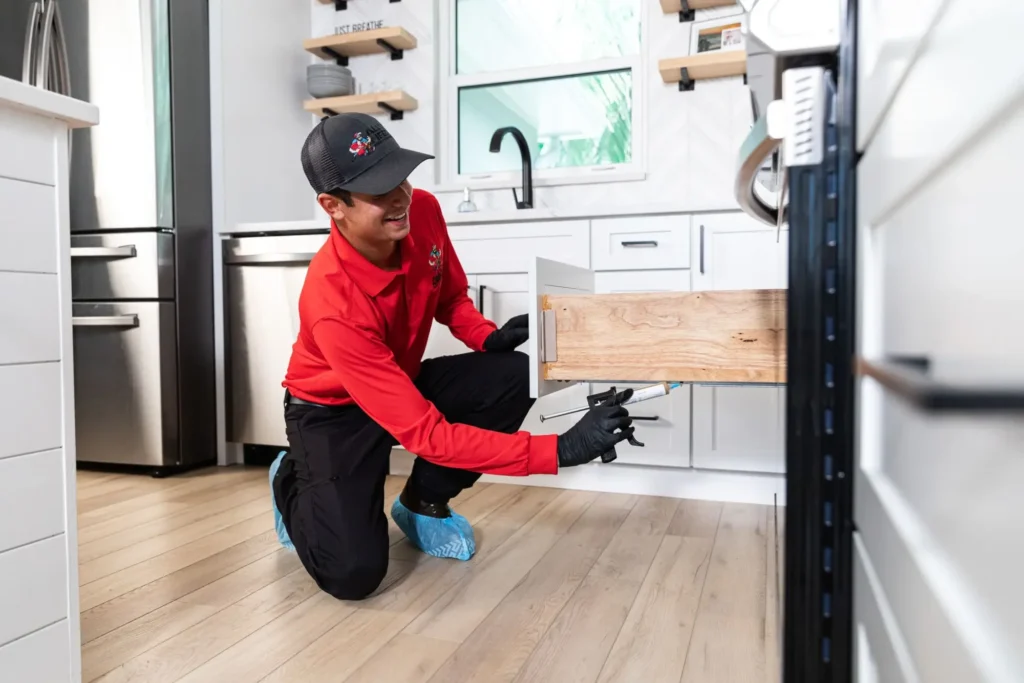
Signs of a Millipede Infestation in Charleston, SC
Sightings in Damp Areas
Expect to find millipedes where humidity lingers: crawl spaces, utility rooms, bathrooms with weak ventilation, and along cool, shaded baseboards—especially after heavy rain. Outdoors, look under doormats and planters, in pine straw packed against siding, behind porch steps, and along slab edges. Sudden interior clusters often follow days of soaking storms or very high tides.
Damage to Plants
While millipedes prefer decaying matter, they sometimes nibble tender seedlings or new growth when food is scarce—particularly in heavily shaded beds. If you notice irregular feeding on soft-stemmed plants, combine treatment with debris reduction, lighter mulches near the foundation, and improved airflow.
Dead Millipedes
Indoors, millipedes often die where air is drier. Finding curled, dried specimens along thresholds, in corners of garages, or on interior floors indicates outside moisture is drawing them toward the structure. Removing the bodies won’t stop the influx—fixing the conditions will.
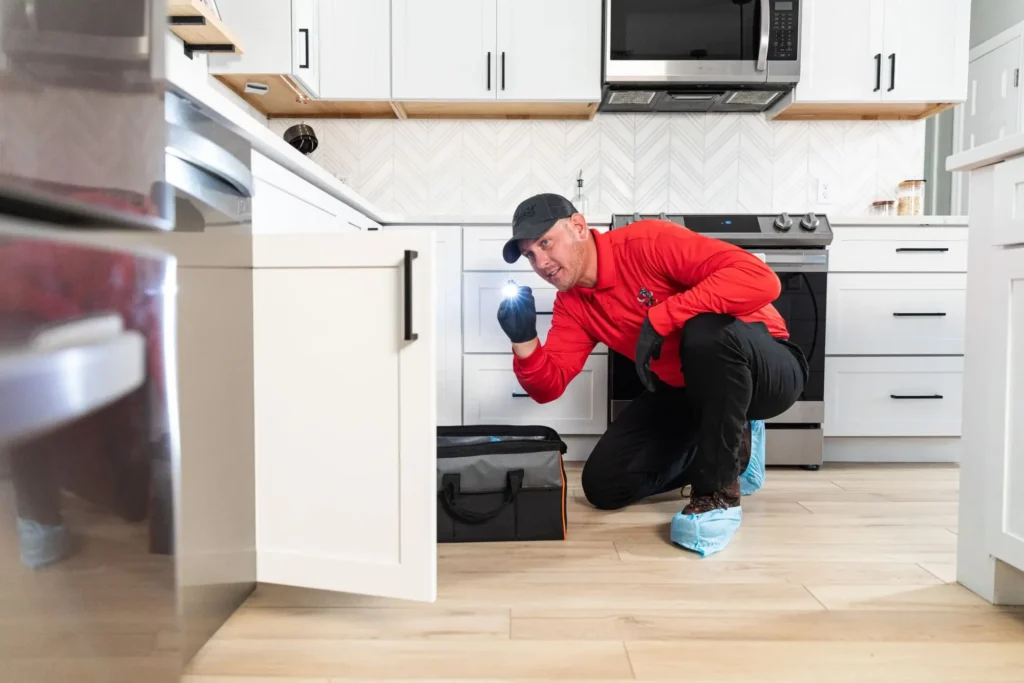
How to Check for Millipedes in Your Charleston home
When you’re gauging severity, start where millipedes hide and travel:
- Moisture-prone locations such as crawl spaces, bathrooms, utility rooms, and garages—check corners and baseboards.
- Entry points—gaps under doors, worn sweeps, unprotected weep holes, and cracks around window/pipe penetrations.
- Mulch, leaf litter, and pine straw pressed against foundations or packed under shrubs along walls and porch lattice.
- Patios, downspout discharge zones, and low spots in the yard that stay wet after storms or king tides.
Can’t find them but still see occasional stragglers? They may be entering at night or through hidden gaps. A professional inspection pinpoints the routes and the exact exterior conditions that are luring them inside.
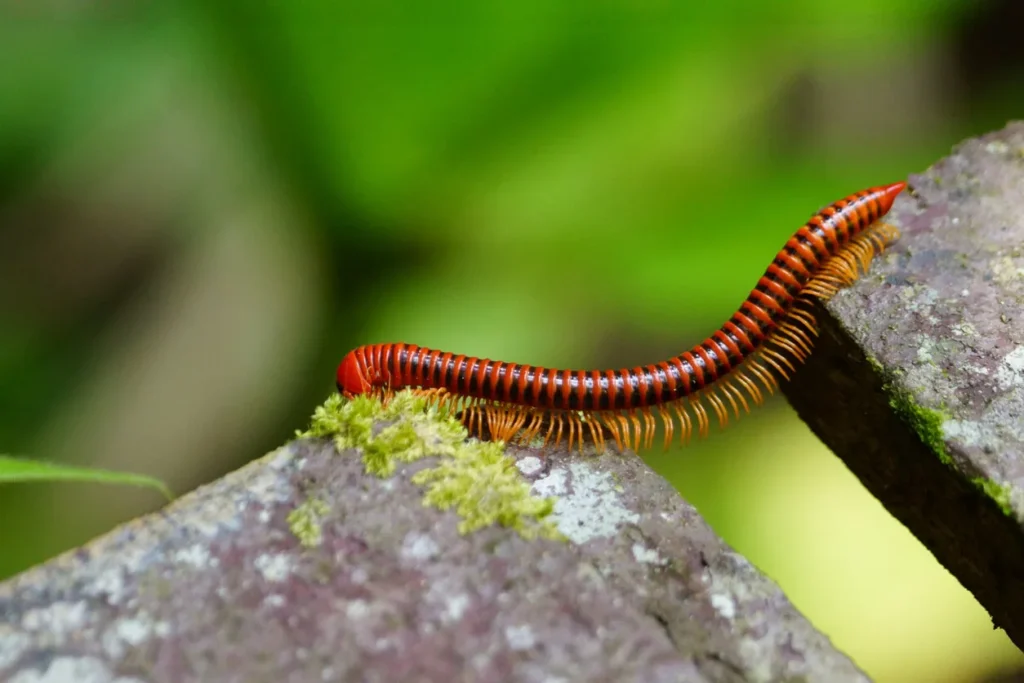
What Do Millipedes Look Like?
Millipedes are elongated, cylindrical arthropods with many body segments and two pairs of legs per segment. In Charleston, common species are dark brown to gray—camouflaging well in pine straw and moist soil—and move more slowly than the flatter, faster centipedes (which have one leg pair per segment). When threatened, millipedes typically curl into a tight spiral, a quick visual cue that helps distinguish them from centipedes.
Other characteristics include:
- Typically dark to grayish bodies that blend with Lowcountry soils, leaf litter, and pine straw.
- A rounded, twig-like silhouette with numerous segments and two leg pairs per segment.
- Short, 7-segment antennae used to sense their environment in dim, damp habitats.
Millipedes can live several years in the right conditions. They mature slowly and lay clusters of eggs in moist soil or mulch—another reason keeping the perimeter drier and clearer reduces future pressure.
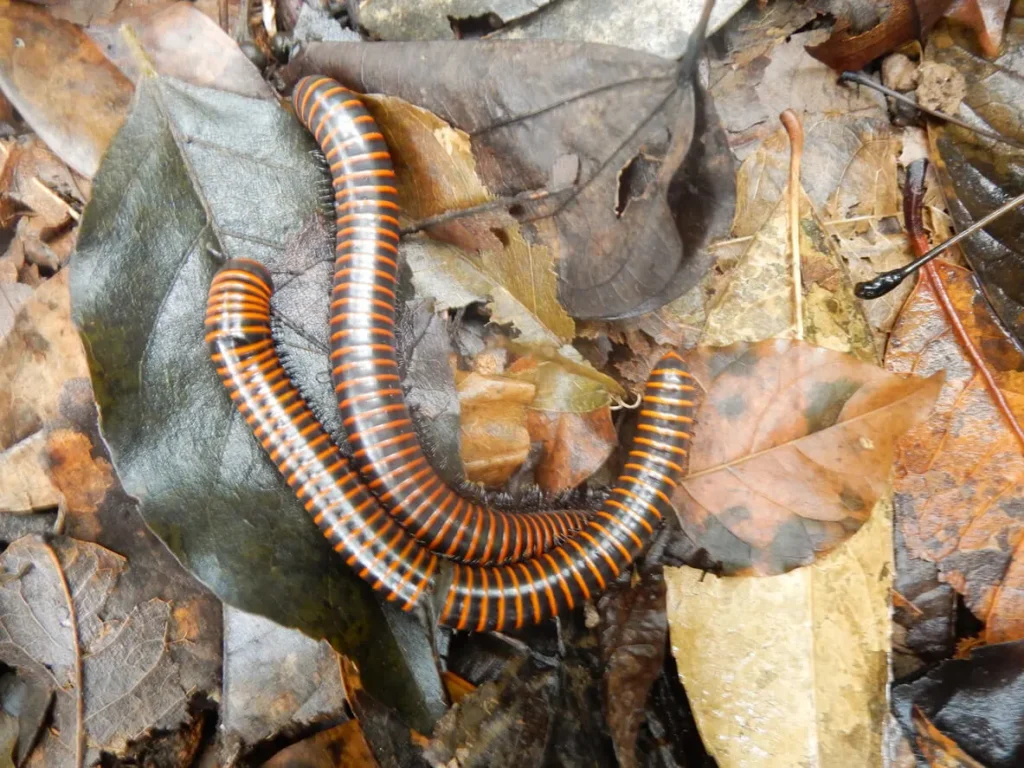
Eco-Friendly Solutions
At All U Need Pest Control, we prioritize treatments that respect Charleston’s coastal ecosystems while protecting your family and pets. Our eco-conscious approach focuses on putting effort where it matters most: drying the perimeter, reducing harborage, sealing entry points, and using precisely placed products that target millipede travel routes.
Minimum-Risk Pesticides
Where appropriate, we choose formulations with favorable safety profiles and apply them exactly where millipedes move—along thresholds, slab edges, porch steps, utility penetrations, and crawl-space interfaces. This “right product, right place” approach controls pests without blanketing living areas.
Eco-Friendly Solutions
We emphasize low-impact products and placement strategies, pairing them with non-chemical steps—drainage improvements, debris reduction, ventilation adjustments, and mulch management—for durable results with a lighter footprint. Many clients in historic districts prefer this approach to protect sensitive finishes and the surrounding landscape.
IPM Practices
Our Integrated Pest Management method blends inspection, exclusion, sanitation, moisture management, and targeted treatments. In Charleston, IPM means accounting for humidity cycles, shade patterns, stormwater behavior, and neighborhood microclimates—from the breezy edges of Sullivan’s Island to the shaded lanes of Wagener Terrace.
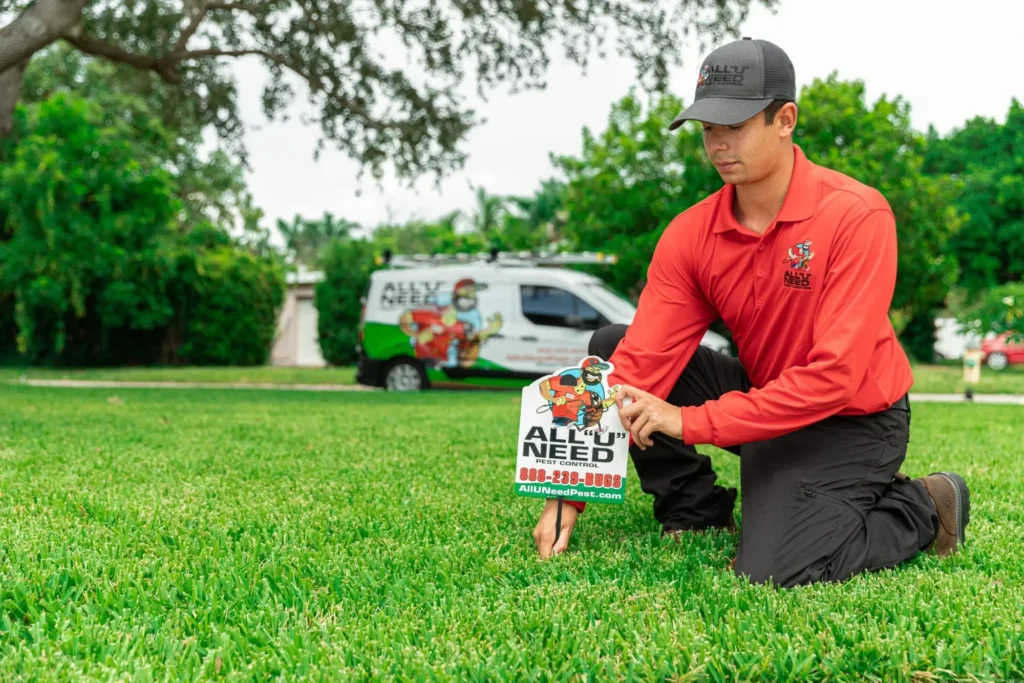
How to Prevent Millipedes in Charleston, SC
Reduce Moisture Levels
Use dehumidifiers where needed and run bath fans long enough to clear humidity. Keep crawl-space moisture in check—consider encapsulation or improved ventilation—and be sure gutters and downspouts move water well away from foundations. Extend splash blocks, add corrugated extensions where grade allows, and correct low spots that collect water near porch steps or driveways. If your irrigation wets the first foot of soil along the house, adjust timing and angles.
Seal Entry Points
Install or replace door sweeps, seal gaps around utility penetrations, repair torn screens, and fit weep-hole covers designed for masonry. Pay special attention after big storms, when subtle shifting can open hairline cracks. In raised homes, close gaps at crawl-space doors and lattice that allow easy passage from shaded beds to subflooring.
Remove Organic Debris
Rake leaf litter, thin heavy pine straw, and avoid thick mulch layers pressed against siding. Bag and remove debris after storms; don’t let leaf piles linger by foundation plantings. Keep compost contained and away from walls. The drier and tidier the perimeter, the fewer millipedes you’ll see.
Change Your Landscaping
Improve grading and drainage, add gravel or stone borders next to foundations, and space plants to promote airflow and faster drying. Choose varieties that don’t require constant deep watering at the home’s edge. If you prefer pine straw for aesthetics, keep it thin near the structure and consider a mineral-mulch transition band for the last 8–12 inches.
Keep Your Home Clean
Declutter porches and garages, elevate storage, and avoid stacking wet items (doormats, bags of soil) near doors. Inside, address minor leaks promptly and wipe condensation along windowsills during humid stretches. These simple habits reduce the moisture cues that draw millipedes in.
Work With a Pest Control Expert
The right partner prevents repeat problems. Our regular inspections include:
- Identifying and sealing millipede entry points such as gaps under doors and unprotected weep holes—without restricting needed ventilation in older homes.
- Treating likely travel routes to stop millipedes before they accumulate indoors, timed around Charleston’s rainfall and tide patterns.
- Providing Charleston-specific prevention tips—drainage tweaks, mulch adjustments, crawl-space moisture control, and landscaping practices that keep the perimeter dry.
Location Contact:
419 N Cedar St Summerville, SC 29483
Get Directions for 419 N Cedar StSummerville, SC 29483 on Google Maps843-489-8818
Call All "U" Need Pest Control